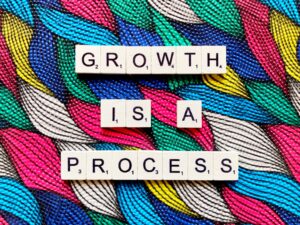How to Measure Growth For A Business: 5 Key Metrics
Revenue Growth Rate
How do you calculate your Revenue Growth Rate?
To calculate your revenue growth rate, subtract your previous period’s revenue from your current period’s revenue, divide that number by your previous period’s revenue, and then multiply by 100. A high revenue growth rate indicates that your business is growing quickly, while a low or negative growth rate may indicate that you need to make changes to your strategy.
Customer Acquisition Cost (CAC).
Customer Acquisition Cost (CAC) refers to the total cost incurred by a decorating business to acquire a new customer. This metric includes all the expenses related to marketing and sales activities aimed at attracting and converting new customers, such as advertising, promotions, salaries and commissions, and overhead costs. This is another key metric to measure the growth for a business.
Calculating the CAC is important because it provides insights into the efficiency and effectiveness of a decorating business’s marketing and sales strategies. If the CAC is high, it means that the business is spending more to acquire a customer than the customer is worth in terms of lifetime value, which can result in reduced profitability and long-term sustainability. On the other hand, a low CAC implies that the business is efficiently acquiring new customers and has a good return on investment.
By monitoring and reducing the CAC, a decorating business can improve its profitability, optimize its marketing and sales strategies, and achieve sustainable growth. Additionally, a low CAC can also be an attractive feature to investors, as it indicates that the business has the potential for future profitability and scalability.
How do you calculate your Customer Acquisition Cost (CAC)?
To calculate your CAC, divide your total marketing and sales expenses by the number of new customers acquired during a specific period of time. A high CAC may indicate that your marketing and sales efforts are not efficient, while a low CAC may indicate that you are effectively acquiring new customers. It’s important to keep your CAC in check to ensure that your growth for a business sustainable.

Customer Retention Rate.
Customer Retention Rate (CRR) is a metric that measures the percentage of customers who continue to do business with your decorating business over time. It is an important indicator of the business’s ability to retain its customers and their loyalty. A high CRR indicates that the business is effectively meeting its customers’ needs and expectations, providing quality products and services, and maintaining strong relationships with them. On the other hand, a low CRR can suggest that the business is not meeting its customers’ expectations, leading to churn and loss of revenue.
By improving its CRR, a decorating business can increase customer lifetime value, reduce customer acquisition costs, and drive sustainable growth. Additionally, a high CRR can also lead to positive word-of-mouth referrals, which can attract new customers and expand the business’s customer base. Therefore, monitoring and improving CRR should be a key focus for decorating businesses looking to enhance customer satisfaction, loyalty, and overall business performance. Yet another way to track growth for a business!
How do you calculate your Customer Retention Rate.?
To calculate your retention rate, divide the number of customers you retained during a specific period by the total number of customers you had at the beginning of that period. A high retention rate indicates that your customers are satisfied with your products or services and are likely to continue doing business with you in the future. It’s important to focus on retaining your existing customers as it’s more cost-effective than acquiring new ones.
Gross Profit Margin.
Gross Profit Margin (GPM) is a financial metric that measures the percentage of revenue that remains after deducting the cost of goods sold (COGS). It is a critical metric for assessing a decorating business’s profitability and operational efficiency. A high GPM indicates that the business is generating more revenue from its sales than the cost of producing and delivering its products or services, resulting in healthy profit margins. On the other hand, a low GPM implies that the business is struggling to control its production and delivery costs or has pricing challenges, leading to reduced profitability. So, aiming for a high GPM will maintain higher growth for a business.
By monitoring and improving its GPM, a decorating business can optimize its pricing strategies, improve cost management, and achieve sustainable profitability. Moreover, a high GPM can also be an attractive feature to potential investors or buyers, as it indicates that the business has strong profitability and growth potential. Therefore, a decorating business should aim to maintain a healthy GPM by consistently reviewing its pricing and cost structures, identifying cost-saving opportunities, and improving operational efficiencies.
How do you calculate your Gross Profit Margin.?
It’s calculated by subtracting the cost of goods sold from your total revenue and then dividing that number by your total revenue. A high gross profit margin indicates that your business is generating more revenue than it’s spending on producing and selling its products or services. This metric is important because it helps you understand how much profit you’re making on each sale and can help you make decisions about pricing and cost management.
Net Promoter Score (NPS).
The Net Promoter Score (NPS) is a metric that measures a decorating business’s customer loyalty and satisfaction by asking customers to rate the likelihood of recommending the business to others on a scale of 0-10. The NPS is calculated by subtracting the percentage of detractors (customers who rate the business 0-6) from the percentage of promoters (customers who rate the business 9-10). The resulting score ranges from -100 to +100, with a higher score indicating greater customer loyalty and advocacy.
The NPS is a valuable metric for decorating businesses because it provides insights into the customer experience, identifies areas for improvement, and helps drive customer satisfaction and loyalty. A high NPS can lead to growth in a business with positive word-of-mouth referrals, increased customer retention, and improved business performance. On the other hand, a low NPS can indicate customer dissatisfaction, leading to churn, negative reviews, and decreased revenue.
By monitoring and improving its NPS, a decorating business can identify and address customer pain points, enhance the customer experience, and build a strong brand reputation. Therefore, NPS should be a key focus for decorating businesses looking to improve customer satisfaction, loyalty, and overall business performance.
How do you calculate your Net Promoter Score (NPS).?
The Net Promoter Score (NPS) is calculated by subtracting the percentage of detractors from the percentage of promoters. A high NPS indicates that your customers are satisfied and loyal, which can lead to increased sales and growth for your business.
Want to join The Decorators Growth Club Pro Members?
A great way to ensure business development is to join The Decorators Growth Club Pro Members because we help and encourage you with all of the above. Plus, you join with fellow decorators with the same problems as you, who are looking for growth in a business but who are also there to help and guide you along the way with their own experiences.
If you are interested but don’t want to part with any money, then check out the decorator’s growth club FREE group where we post lots of great tips that can help us make more money, BUT the best way to get even more help and guidance is to join the Pro Members Group for only £25 a month.




